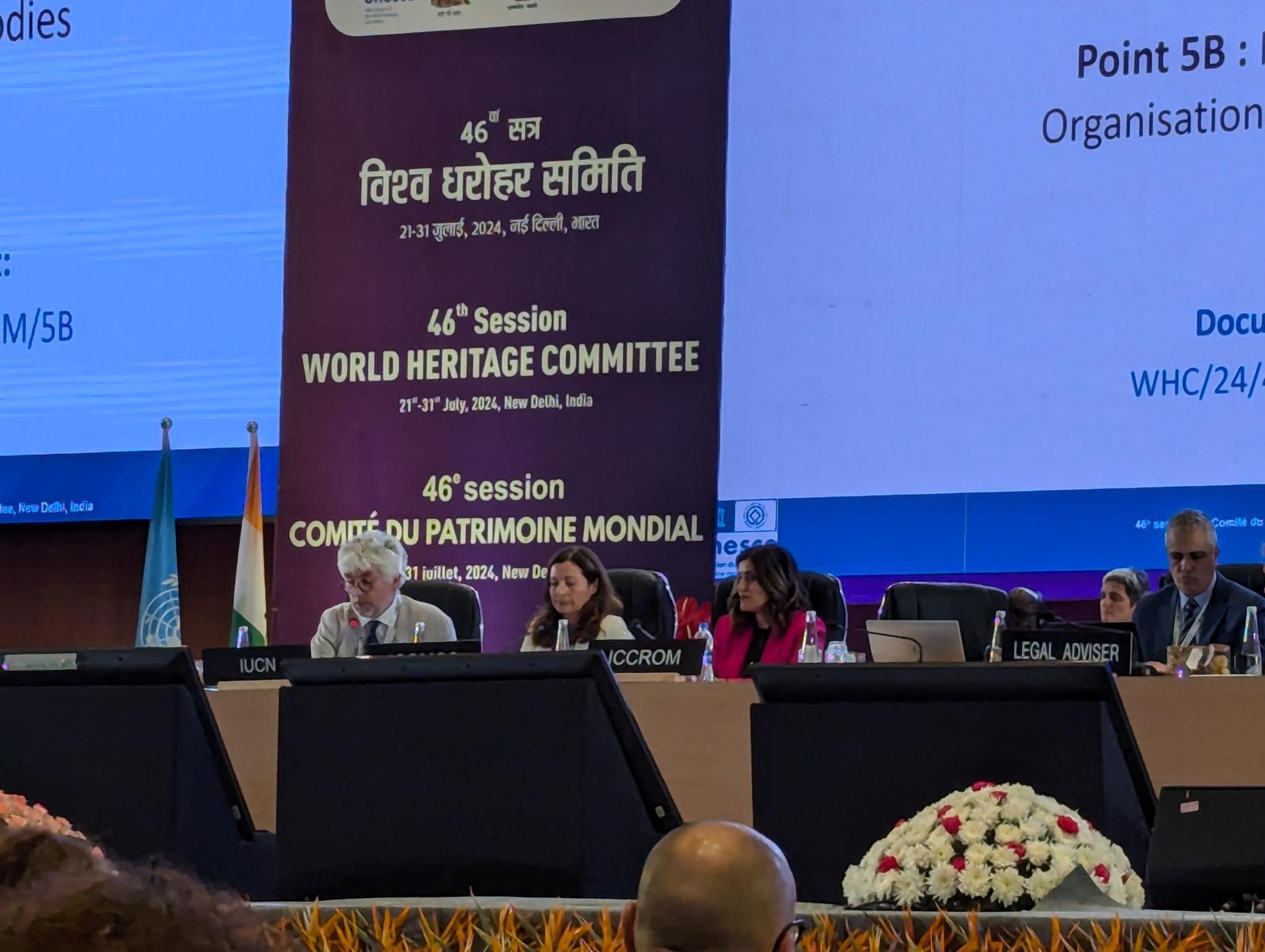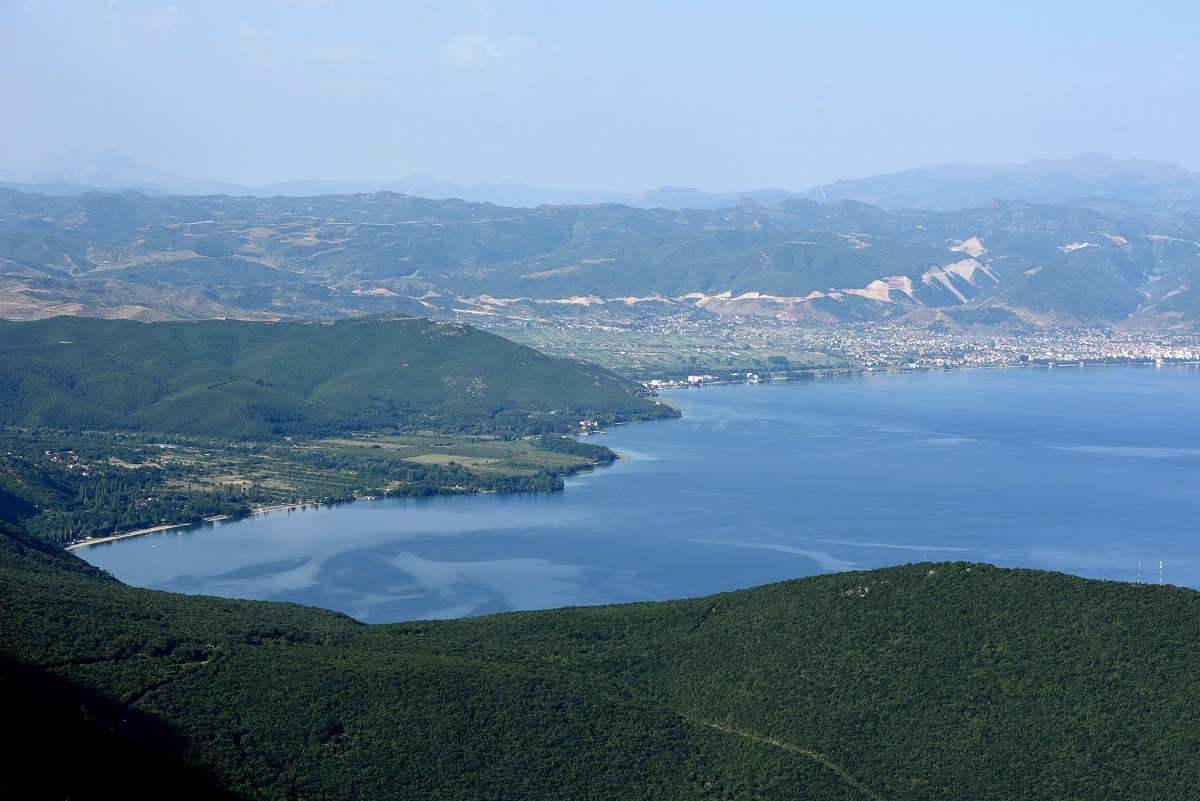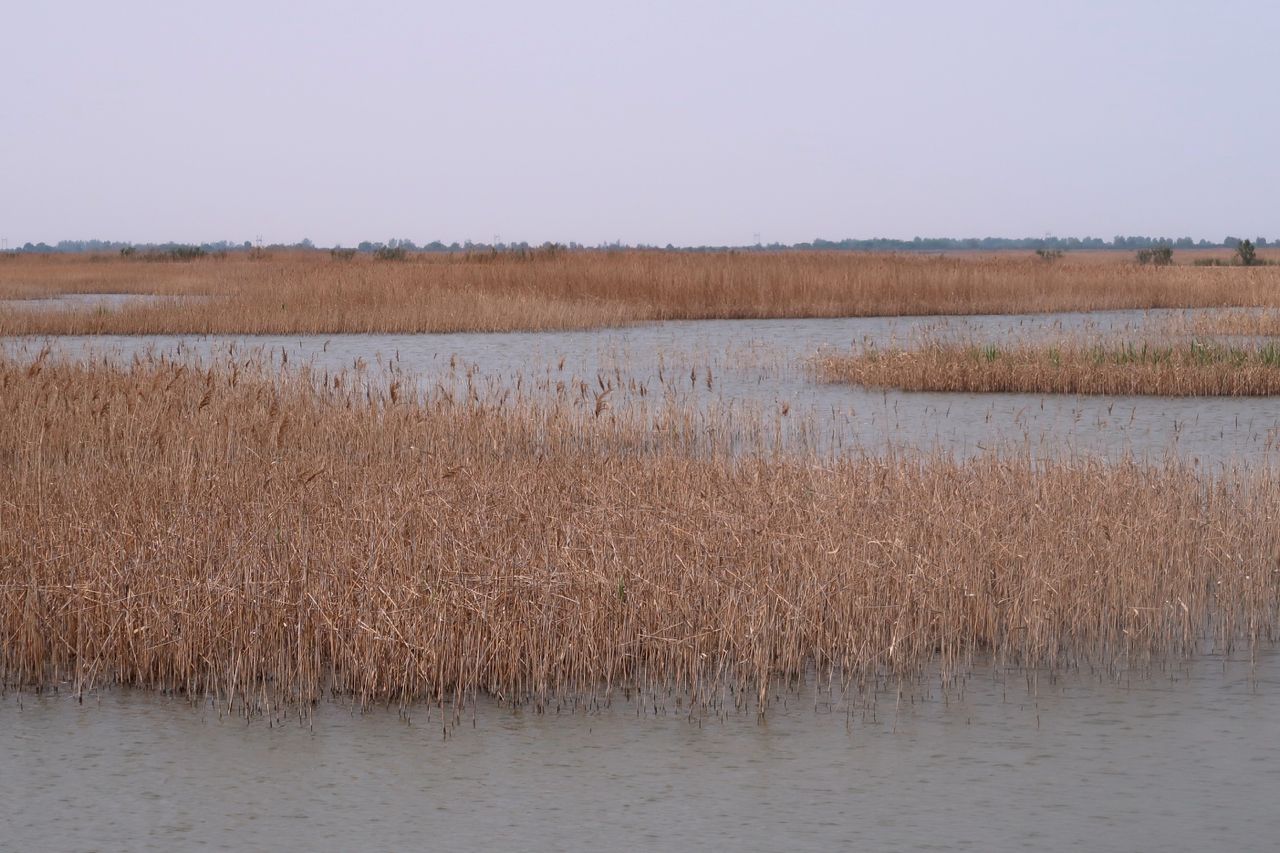Reforming in Riyadh: the IUCN closing blog from the 2023 World Heritage Committee
The extended 45th session of the World Heritage Committee has just closed here in Riyadh, a mammoth event covering two years of work instead of the normal one. IUCN has had a good meeting, with a fantastic, diverse and hardworking delegation that has both brought our advisory role to the World Heritage Committee to life, and managed a series of side events throughout the last two weeks, and launched the new IUCN World Heritage Strategy.
The World Heritage Committee meeting, supported by side events and new publications, has highlighted the role of World Heritage in the new Global Biodiversity Framework and in securing industry commitments to protect nature, thanks to the collaboration between IUCN and UNESCO. We also held side events to bring the Green List Standard closer to World Heritage. We co-hosted, through our World Heritage Leadership Programme, the Site Managers Forum, the most energetic practice-based space at any World Heritage Committee. And we (including the famous World Heritage “Green Machine”) paid tribute to one of the greatest of the IUCN World Heritage Greats – our dear and lamented friend Jim Thorsell.
The meeting has been wonderfully hosted by Saudi Arabia, with good-humoured and effective chairpersonship throughout. The headline results - an area 26 times the size of Switzerland receiving the highest level of international protection - based on IUCN advice are summarised here. If you want the full story you can rerun the movie here (under livestream). But what are the take-homes? Here are four points to notice about the last two weeks in Riyadh.
Dialogue is everything
The biggest take home from me is the huge positive of an in-person meeting. The Committee last met in person four years ago, and the online meeting of two years ago was a grim experience for the Advisory Bodies; a feeling I describe as like “being the TV in the corner of a bar”. The reality is that negotiations and mutual understanding need direct human contact; the corridors, side-events, water cooler and coffee machine don’t exist in hyperspace. And it is a real pleasure to meet old and new friends in person. This need for dialogue was reinforced with some new procedures introduced (Item 7 for World Heritage insiders) that will increase exchanges on State of Conservation Reports, missions and possible Danger List recommendations. It is clear that the World Heritage Committee will be much more likely to support our advice if we have reached consensus with the State Party in question beforehand. We will see now how this can work in practice, as the challenges of the crazy rhythm of an annual World Heritage Committee, and the lack of funding in the World Heritage systems mean that time and money are real constraints and the fact that half of reports from States are delivered late makes it even more difficult. But more dialogue before the Committee meets is clearly essential, so we have to make it work. IUCN has previously proposed that the Committee should only meet every two years to rebalance big expensive meetings with the needs that sites have at ground level – that remains the sort of radical solution we need.
When deferrals get inscribed…
This year, as has been the norm, the World Heritage Committee listed almost all the new nominated sites, regardless of the recommendation of IUCN and our fellow Advisory Bodies. Sites evaluated for deferral or referral by us became inscriptions, with a feeling of “precooked in Paris” as many delegations read out carefully prepared statements and questions in favour of an amended decision. I can rattle on for hours about this practice, which has become a norm since 2010, but important to say that this year some of those changes were not a problem – States had acted on our advice to finalise new management plans or remove mining threats to sites since we issued our report, and we and the Committee were able to verify the progress and hear clear commitments in response to questions. I am happy to see sites listed in such circumstances: it is a positive result for real-world conservation impact. More problematic is when the States don’t apply the Convention’s own Operational Guidelines (we rarely disagree on the actual technical assessment), including inscribed sites moving straight to needing reports on their state of conservation (and more problematically not ensuring protection and conservation). Prior discussions helped to bridge this gap in several decisions, but not all. World Heritage insider’s news: the COM agreed that in future, deferrals and referrals won’t count in a Country’s quota of sites to go to the Committee – perhaps that will also lessen the unhelpful pressure for instant inscriptions.
Still falling short on the voice of Indigenous Peoples
The International Indigenous Peoples’ Forum on World Heritage (IIPFWH) is a new voice in the World Heritage system. They are an active and growing partner of IUCN, and we met to discuss how to work more systematically together on evaluations, monitoring and the recognition of Indigenous peoples’ cultural values within all World Heritage sites. Several of the new listings, such as Anticosti in Canada, demonstrated consent and leadership of Indigenous peoples in the proposals. However in the working methods of the Committee, their voice, and the voice of communities and civil societies more widely, is too often excluded. IIPFWH spoke several times in the meeting to decry the practice of only allowing Indigenous peoples to have voice after the Committee takes a decision on sites – a practice which institutionalises and advertises the lack of voice being given to communities and civil society as a whole. This needs to change. The working methods of the Convention as a whole need to be overhauled to allow Indigenous peoples and local communities to not just participate, but to lead.
Root and branch reform?
The World Heritage Convention, a 50 year old treaty that started its life in the 1960s (like me) needs to reflect on its future. Issues facing the Convention were hotly debated at the ICOMOS General Assembly that immediately preceded this meeting, and where we co-hosted the Culture Nature Journey. The need for a change of approach underpinned many interventions, and it is pleasing that many delegations are speaking of issues that IUCN recognises as needing action – the lack of balance of the World Heritage List, the need for diversity and inclusion in processes, the lack of human and financial capacity, and the need to rethink working methods. But we have been here before, many of the same issues faced the Convention at 40, so I hope this time the “mid-life crisis” will lead to some decisive change. IUCN is on the path of change already, and our goals and ambitions are set out in our new IUCN World Heritage Strategy (and in the Independent Review and IUCN response we undertook last year). Please join us and help World Heritage achieve its still unrealised full potential.
So that is it for another Committee. Next year we expect 46COM to be in India with the dates to be fixed in November. Until then my thanks to the brilliant IUCN team, all our partners, and the volunteers from the IUCN Commissions who support World Heritage through missions, reviews and working on our Panel. This work is only possible because of you.
Disclaimer
Opinions expressed in posts featured on any Crossroads or other blogs and in related comments are those of the authors and do not necessarily reflect the opinions of IUCN or a consensus of its Member organisations.
IUCN moderates comments and reserves the right to remove posts that are deemed inappropriate, commercial in nature or unrelated to blog posts.



